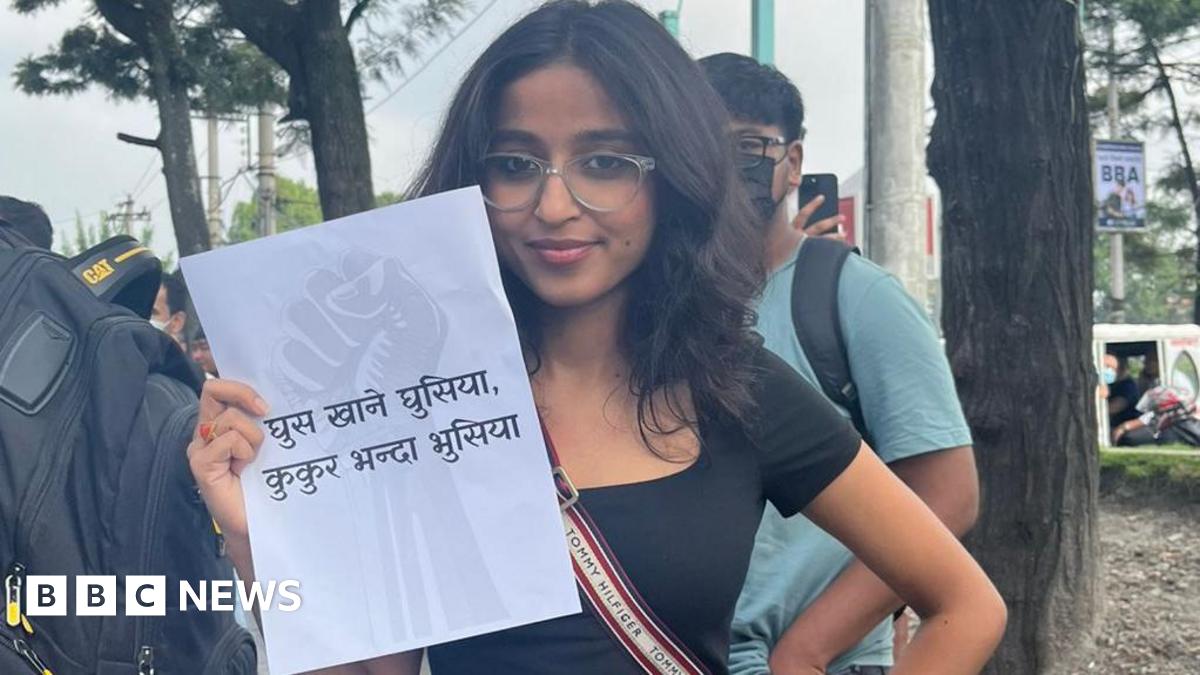Two days before the deadly demonstration on 8 September, Ms Pandey, a 24-year-old environmental campaigner, uploaded a video showing a mining site in Chure, one of the most fragile mountain ranges in the region. Nepal’s resources should belong to the people, not to “politicians’ private limited companies”, she wrote, calling on her peers to “march against corruption and the misuse of our nation’s wealth”.
Like many youth movements in Asia, Nepal’s Gen Z protests were leaderless. Others had made similar pleas to Ms Pandey’s after the Nepali government decided to ban 26 social media platforms, citing their failure to register locally.
For months, fury had been brewing against “nepo babies”, the children of powerful politicians of all stripes, who were accused of flaunting their unexplained wealth on social media.
One of the most viral photos showed Saugat Thapa, external, the son of a provincial minister, standing next to a Christmas tree made of boxes of luxury brands including Louis Vuitton, Gucci and Cartier. In response, he said it was “an unfair misinterpretation” and his father “returned every rupee earned from public service to the community”.
Ms Pandey had watched almost all “nepo babies” content, but one video juxtaposing the luxurious life of a political family and an ordinary young Nepali who had to find work in a Gulf country struck her.
“It is painful to watch, especially knowing that even educated youth are forced to leave the country because wages here are far below what one needs to live with dignity,” she said.
Nepal is a young democracy. It became a republic in 2008, after a decade-long, Maoist-led civil war that killed more than 17,000 people.
But the promised stability and prosperity have not materialised. In 17 years, Nepal has had 14 governments, and no leader has completed a full five-year term. The country’s politics resemble a game of musical chairs, with communist parties and the centrist Nepali Congress taking turns to rule. Three leaders, including KP Sharma Oli who resigned over the Gen Z protests, returned to power multiple times.
Nepal’s GDP per capita remained under $1,500, making it the second-poorest country in South Asia, behind only Afghanistan. An estimated 14% of the population work overseas, and one in three households receives remittances.
Ms Pandey comes from a middle-class family in eastern Nepal and her father is a retired government teacher. Three years ago, she was diagnosed with a brain tumour, for which she is still receiving treatment. The medical bills nearly bankrupted her family, so her older sister moved to Australia to support them.
